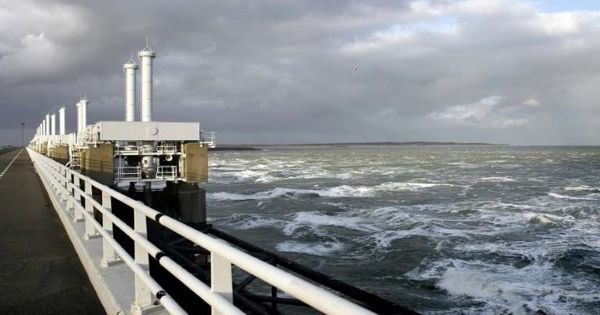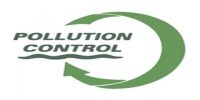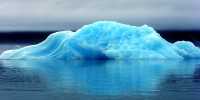A new study has provided direct evidence that tidal-driven groundwater inundation of wastewater infrastructure is occurring in urban Honolulu, Hawai’i. The study shows that higher levels of ocean water lead to wastewater entering storm drains and the coastal ocean—creating negative impacts on the quality of coastal water and environmental health. When people think of rising sea levels, they usually think of coastal erosion. However, recent computer modeling studies have shown that coastal wastewater infrastructure, including sewer lines and reservoirs, is likely to flood with groundwater as the sea level rises.
Higher ocean water levels are leading to wastewater entering storm drains and the coastal ocean — creating negative impacts to coastal water quality and ecological health.
A new study, published by the University of Hawai’i (UH) at Manoa Earth scientists, is the first to provide direct evidence that tidal-driven groundwater inundation of wastewater infrastructure is occurring in urban Honolulu, Hawai’i. The study shows that higher levels of ocean water lead to wastewater entering storm drains and the coastal ocean—creating negative impacts on the quality of coastal water and environmental health.
Sea-level rise (SLR) is expected to compromise coastal wastewater infrastructure (WIS) through groundwater inundation (GWI). Researchers conducted a field-based study in urban Honolulu, Hawai’i, using spring tides as a proxy for future sea levels to quantify the hydrological connection of WIS. This study focused on two possible pathways: (1) direct WIS GWI and subsequent discharge into the coastal ocean, and (2) indirect WIS flooding in storm drains.
The study was led by postdoctoral researcher Trista McKenzie and co-authored by UH Sea Grant Coastal Geologist Shellie Habel and Henrietta Dulai, advisor and associate professor at UH Manoa School of Ocean and Earth Science and Technology (SOEST). The team assessed coastal ocean water and stormwater in low-lying areas during spring tides, which serve as an approximation of future sea levels.
In order to understand the link between the wastewater infrastructure, groundwater, and the coastal ocean, the researchers used chemical tracers to detect groundwater and wastewater at each site. Radon is a natural gas that reliably indicates the presence of groundwater, while wastewater can be detected by measuring specific organic contaminants from human sources, such as caffeine and certain antibiotics.
“Our results confirm that both groundwater inundation and wastewater discharges to the coast and storm drains are occurring today and that they have a tidal influence,” McKenzie said. “While the results were predicted, I was surprised at the prevalence and scale of the evidence for these processes.”
In lowland areas, storm drains can overflow every spring tide. This study has shown that, at the same time, wastewater from damaged infrastructure is also discharged into storm drains. During high tides, storm drains become channels for untreated wastewater to flood streets and sidewalks. In addition to hindering traffic, including access to emergency vehicles, this flood of contaminated water also poses a risk to human health.
The team also found evidence that many human-derived contaminants were present at concentrations that pose a high risk to aquatic organisms. This has negative consequences for coastal organisms where groundwater and storms discharge. “Many people may think sea-level rise is a future problem, but we’re actually seeing the effects today,” McKenzie said. “These threats to human health, ocean ecosystems and wastewater infrastructure are also expected to occur with even greater frequency and magnitude in the future.”
This project demonstrates that actions to mitigate the impact of rising sea levels on coastal wastewater infrastructure in Honolulu are no longer proactive but are crucial to addressing current issues. Through its multi-partner effort, the Hawai’i State Climate Commission is also raising awareness of the variety of impacts of rising sea levels, including those highlighted in this study.
“Coastal municipalities should pursue mitigation strategies that increase connectivity between wastewater infrastructure and recreation and drinking water resources,” McKenzie said. “We need to consider the infrastructure that minimizes flood opportunities and contact with contaminated water; and reduces the number of sources of contaminants, such as the installation of one-way storm drain valves, the decommissioning of cesspools, the monitoring of defective sewer lines, and the construction of raised walkways and streets.”
















